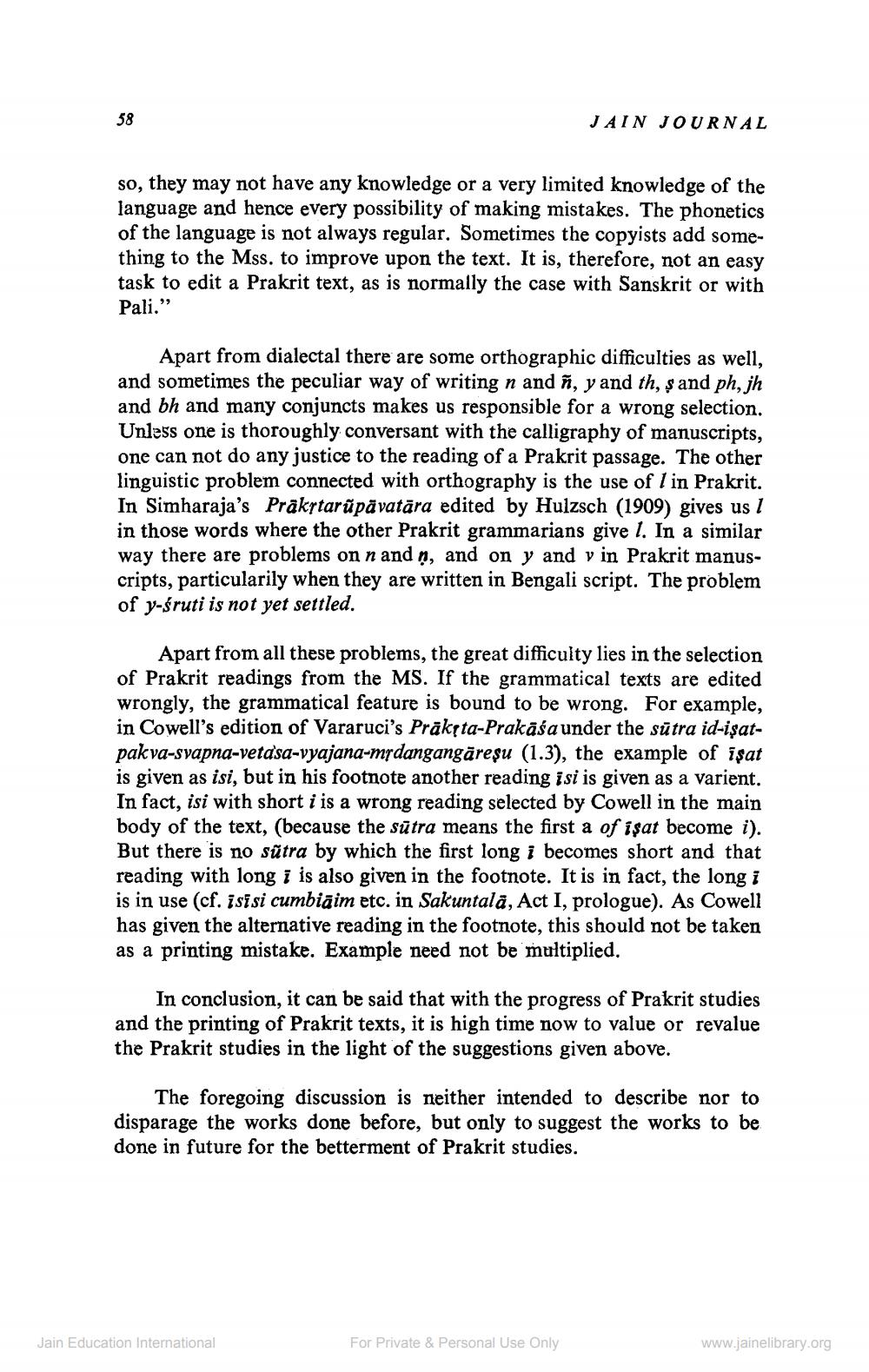________________
JAIN JOURNAL
so, they may not have any knowledge or a very limited knowledge of the language and hence every possibility of making mistakes. The phonetics of the language is not always regular. Sometimes the copyists add something to the Mss. to improve upon the text. It is, therefore, not an easy task to edit a Prakrit text, as is normally the case with Sanskrit or with Pali."
Apart from dialectal there are some orthographic difficulties as well, and sometimes the peculiar way of writing n and ñ, y and th, ş and ph, jh and bh and many conjuncts makes us responsible for a wrong selection. Unless one is thoroughly conversant with the calligraphy of manuscripts, one can not do any justice to the reading of a Prakrit passage. The other linguistic problem connected with orthography is the use of I in Prakrit. In Simharaja's Prakrtarūpāvatāra edited by Hulzsch (1909) gives us 1 in those words where the other Prakrit grammarians give I. In a similar way there are problems on n and ņ, and on y and y in Prakrit manuscripts, particularily when they are written in Bengali script. The problem of y-śruti is not yet settled.
Apart from all these problems, the great difficulty lies in the selection of Prakrit readings from the MS. If the grammatical texts are edited wrongly, the grammatical feature is bound to be wrong. For example, in Cowell's edition of Vararuci's Prāktta-Prakāśa under the sutra id-isatpakva-svapna-vetasa-vyajana-mpdangangāresu (1.3), the example of īsat is given as isi, but in his footnote another reading isi is given as a varient. In fact, isi with short i is a wrong reading selected by Cowell in the main body of the text, (because the sūtra means the first a of isat become i). But there is no sūtra by which the first long i becomes short and that reading with long i is also given in the footnote. It is in fact, the long i is in use (cf. isīsi cumbiāim etc. in Sakuntala, Act I, prologue). As Cowell has given the alternative reading in the footnote, this should not be taken as a printing mistake. Example need not be multiplied.
In conclusion, it can be said that with the progress of Prakrit studies and the printing of Prakrit texts, it is high time now to value or revalue the Prakrit studies in the light of the suggestions given above.
The foregoing discussion is neither intended to describe nor to disparage the works done before, but only to suggest the works to be done in future for the betterment of Prakrit studies.
Jain Education International
For Private & Personal Use Only
www.jainelibrary.org




